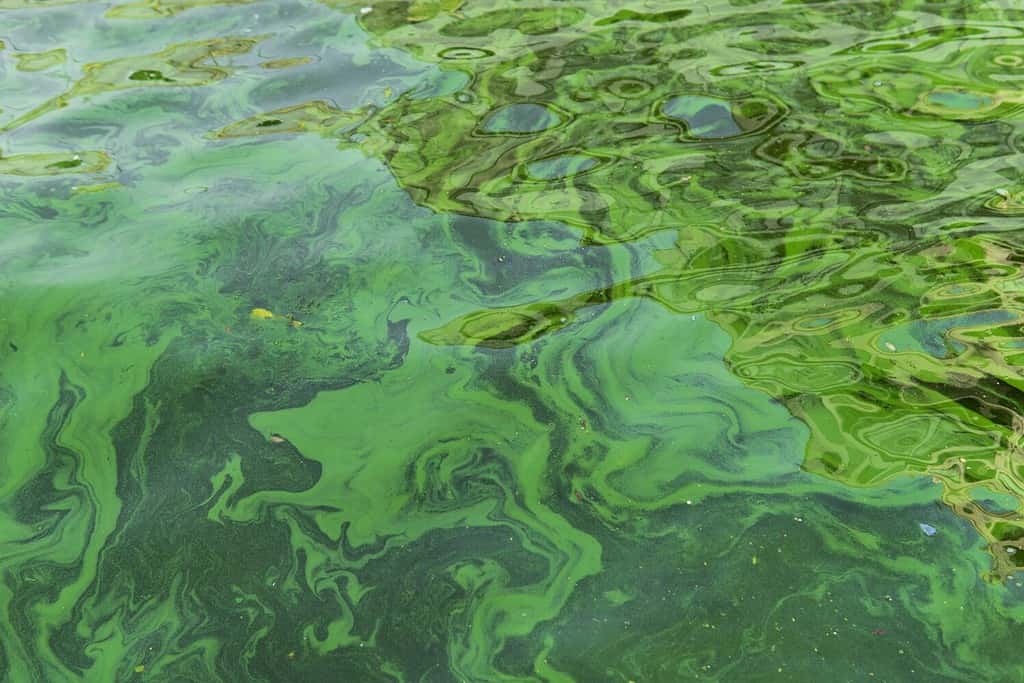Things have got to get pretty bad for a lake to be declared as ‘dead’ but that is exactly what happened to Lake Erie in the 1960s. It is the shallowest, warmest, and most productive of the Great Lakes but is it the dirtiest? Just how polluted is Lake Erie? Here we take a close look at what is causing the lake’s pollution and how much of it there is.
Lake Erie Facts And Figures
This troubled expanse of water borders Michigan, Ohio, Pennsylvania, New York, and the Canadian province of Ontario. Even though it is the smallest by volume and the shallowest of the Great Lakes it is still an impressive size! According to the University of Michigan, it is 241 miles long and 57 miles wide. Its average depth is 62 feet but it reaches a maximum of 210 feet in places. The lake holds 116 cubic miles of water provided by several rivers including the Detroit River which drains Lake St Clair and Lake Huron. Lake Erie drains into Lake Ontario via the Niagara River.
What Is Polluting Lake Erie?
During the 1960s, the pollution in Lake Erie was mainly from industrial waste and sewage runoff. There were even incidents when the rivers draining the lake caught fire! Following the introduction of clean water laws, the situation improved but now it faces new threats. The current state of the lake ecology is considered poor partly due to excess nutrient input that supports harmful algal blooms or HABs. HABs are typically dominated by toxin-producing cyanobacteria and are triggered by high concentrations of a mineral called phosphate but the exact causes are more complicated than that.
Scientists think that HABs are caused by a combination of agricultural sources of biologically available soluble nutrients, phosphorus that was already present in the Lake Erie watershed, the arrival of invasive species (specifically mussels), and climate change.
Water quality data is constantly collected from the lake to observe the size, movement, and toxicities of HABs.
Why Is Lake Erie So Polluted?
Lake Erie is so susceptible to pollution and climate change because of its catchment area (which is urban, agricultural, and industrial) and because it is so shallow and warm compared to other lakes. This leads to excess nutrients in the lake – a process called eutrophication. The nutrient pollution includes phosphorus from agriculture.
Is Lake Eerie Dangerous?

Harmful algal blooms can be dangerous for people and animals.
©Aleksandrkozak/Shutterstock.com
The Erie County Department of Health routinely tests the water on the lake’s beaches. They issue advice on a color scale – red means that swimming is not permitted.
The warmer the water in Lake Erie, the more likely an algal bloom is. They are typically seen there from mid-to-late July to the end of September. The largest blooms occur in the western basin of the lake but other parts also experience more localized blooms. They can look like latex paint, pea soup, or scum and can be blue, green, white, brown or red.
The cyanobacteria release toxins into the water that can cause symptoms in people that come into contact with them. These include skin, eye, and throat irritation, stomach upsets, and headaches. In animals, including livestock and dogs, they can cause stomach upsets, liver failure, and convulsions and can be fatal.
What Efforts Are Being Made To Clean It Up
The Great Lakes Water Quality Agreement is a commitment by the governments of Canada and the US to “restore and maintain the physical, biological and chemical integrity of the waters of the Great Lakes.” Grants have also been made available for invasive species control and agricultural watershed management.
Is Lake Erie The Most Polluted Great Lake?
Whilst the other Great Lakes have also suffered from pollution, Lake Erie is the most seriously affected. It is under the greatest stress from urbanization, industrialization, and agriculture. The lake receives more sewage effluent and more sediment loading than the other lakes. The exposed agricultural and urban lands of southwest and northwest Ohio make a large contribution to the lake’s problems.
The photo featured at the top of this post is © 94Mark/Shutterstock.com
Thank you for reading! Have some feedback for us? Contact the AZ Animals editorial team.







